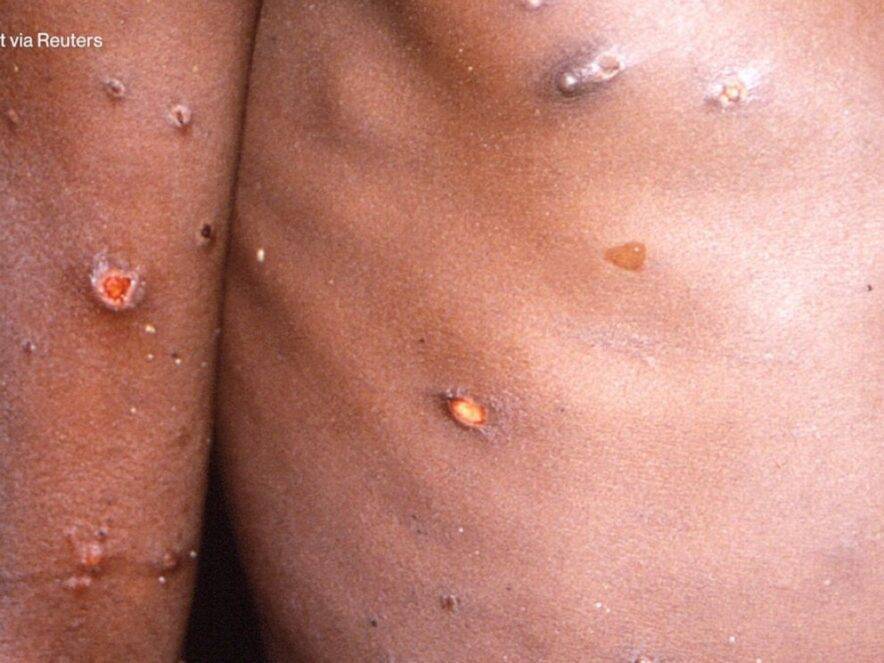Health
Why Weight Loss in Diabetes Is Normal: Unraveling the Mystery for a Healthy Heart

Last Updated on June 2, 2023 by Nurse Vicky
Why Weight Loss in Diabetes Is Normal: Unraveling the Mystery for a Healthy Heart
Living with diabetes can be a challenging journey, requiring careful management of blood sugar levels, diet, and lifestyle. One common phenomenon observed among individuals with diabetes is weight loss.
While it may initially seem concerning, weight loss in diabetes is often considered normal, and it plays a crucial role in maintaining a healthy heart.
In this comprehensive article, we will delve into the reasons behind weight loss in diabetes, its impact on cardiovascular health, and effective strategies to ensure a healthy and balanced lifestyle. So, let’s unravel the mystery and discover why weight loss is an integral part of managing diabetes for a healthy heart.
Understanding Weight Loss in Diabetes
Weight loss in diabetes refers to the unintentional reduction in body weight experienced by individuals with this condition. It is primarily attributed to the body’s inability to effectively utilize glucose, leading to the breakdown of fat and muscle tissues to produce energy.
This process, known as catabolism, results in weight loss despite adequate calorie intake. It is crucial to differentiate weight loss caused by diabetes from intentional weight loss efforts, such as dieting or exercise.
Mechanisms Behind Weight Loss in Diabetes
Increased Urination: Diabetes, especially type 2 diabetes, is characterized by high blood sugar levels. To eliminate excess glucose, the kidneys increase urine production, leading to frequent urination. This constant loss of fluids contributes to weight loss.
Insulin Resistance: In type 2 diabetes, the body becomes resistant to the effects of insulin, a hormone that regulates glucose uptake by cells. This resistance prevents glucose from entering cells and forces the body to break down alternative fuel sources, including fat stores and muscle proteins, leading to weight loss.
Loss of Calories: When blood sugar levels are persistently elevated, excess glucose is excreted in the urine, resulting in a loss of calories. The body compensates for the energy deficit by breaking down fat and muscle tissues, leading to further weight loss.
Impact of Weight Loss on Cardiovascular Health
Weight loss in diabetes can have significant implications for cardiovascular health. Let’s explore some of the key benefits:
Impact of Weight Loss on Cardiovascular Health (contd.)
Improved Insulin Sensitivity: Weight loss helps improve insulin sensitivity, allowing cells to efficiently utilize glucose. This can lead to better blood sugar control and a reduced risk of complications associated with diabetes, including heart disease.
Lower Blood Pressure: Weight loss can lead to a decrease in blood pressure levels, which is crucial for maintaining a healthy cardiovascular system. High blood pressure is a risk factor for heart disease, stroke, and other cardiovascular complications.
Reduced Risk of Atherosclerosis: Atherosclerosis, the buildup of plaque in the arteries, is a common concern for individuals with diabetes. Weight loss can help reduce the risk of atherosclerosis by improving lipid profiles, decreasing cholesterol levels, and preventing the narrowing of blood vessels.
Decreased Inflammation: Excess weight and adipose tissue can contribute to chronic inflammation, which plays a role in the development and progression of heart disease. Weight loss can help reduce inflammation markers and promote a healthier cardiovascular environment.
Strategies for Healthy Weight Loss in Diabetes
Balanced Diet: A balanced and nutritious diet is essential for weight management in diabetes. Focus on consuming whole foods, including fruits, vegetables, lean proteins, whole grains, and healthy fats. Avoid processed foods, sugary beverages, and excessive calorie intake.
Regular Physical Activity: Engaging in regular physical activity not only aids in weight loss but also improves insulin sensitivity, strengthens the heart, and enhances overall cardiovascular health. Incorporate a combination of aerobic exercises, strength training, and flexibility exercises into your routine.
Medication Management: Work closely with your healthcare team to ensure that your medications are optimized for your weight loss goals. Some diabetes medications can cause weight gain, while others may have a neutral or even weight-loss effect. Adjustments may be needed to align with your weight loss objectives.
Behavioral Changes: Adopting healthy lifestyle habits is crucial for sustained weight loss. Practice mindful eating, portion control, and stress management techniques. Seek support from healthcare professionals, diabetes educators, or support groups to stay motivated and overcome challenges.
In the realm of diabetes management, weight loss is often considered a desirable outcome. However, for individuals living with diabetes, unintended weight loss can be a cause for concern.
In this comprehensive guide, we will explore the connection between weight loss and diabetes, uncovering the underlying reasons behind this phenomenon.
By understanding the mechanisms at play, we can make informed decisions and take proactive measures to promote a healthy heart and overall well-being.
The Link Between Weight Loss and Diabetes
- Understanding the Types of Diabetes
- Type 1 Diabetes
- Type 2 Diabetes
- Gestational Diabetes
- Unintended Weight Loss in Diabetes
- Insulin Deficiency and Fat Breakdown
- Impaired Glucose Utilization and Muscle Wasting Increased Energy Expenditure and Caloric Deficit
- Impact of Weight Loss on Diabetes Management
- Glycemic Control and Insulin Sensitivity
- Blood Pressure and Cardiovascular Health
- Lipid Profile and Cholesterol Levels
- Preventing Unintended Weight Loss in Diabetes
- Balanced Meal Planning and Nutritional Considerations
- Regular Physical Activity and Exercise
- Medication Adjustments and Monitoring
People with diabetes often feel like they’re starving themselves, but they’re not. Diabetes actually burns fat and muscle to make energy. This is why some people experience unexplained weight loss.
In addition to burning fat and muscle, people with diabetes have their kidneys work overtime to eliminate excess sugars in the blood.
Unfortunately, this use of energy can lead to kidney damage. People with type 1 diabetes, on the other hand, don’t produce insulin and don’t produce enough insulin to keep their blood sugar levels under control.
High sugars cause weight loss in diabetes
Diabetics tend to lose weight more quickly than people without the disease. Several different factors contribute to this. A poor diet, too little exercise, and high sugar levels are all contributing factors. In addition to the lack of energy and increased thirst, diabetes can cause weight loss.
A balanced diet and physical activity are essential to diabetes weight loss. Small changes in diet can help significantly. Read on for some of the most common causes and treatments for diabetes.
A diet that is low in carbohydrates and high in fiber can help control blood glucose levels and prevent the onset of type 2 diabetes. High-fiber and high-protein foods are also important. People with diabetes should limit red meat, and consume artificial sweeteners in moderation.
Avoiding sugary drinks such as diet soda is another important step in weight loss for people with diabetes. Drink more water instead. Dietary fiber can help you maintain a healthy weight. Exercise can improve blood glucose control and improve overall health.
Diabetes sufferers should talk to a nutrition/fitness trainer about proper exercise. Low-impact exercise can be a great way to lose weight while improving blood glucose levels.
For those who are overweight or obese, getting an exercise trainer can help you make smart choices and stay motivated. They can provide you with low-impact exercise options that help your body manage blood sugar and diabetes.
Exercise is a good way to lose weight with diabetes
Using exercise to help you lose weight is a proven way to improve your health and reduce your risk of diabetes. Regular exercise improves the functioning of the liver, pancreas, skeletal muscles, and blood sugar levels. Bicycling is a great way to burn calories.
Whether you choose to ride a bicycle outdoors or use a stationary bike, cycling can be a beneficial exercise for people with diabetes. When beginning an exercise program, people with diabetes should follow the guidelines to lower their blood sugar before starting a new workout.
It is also important to follow the guidelines to prevent hypoglycemia. When exercising, it is best to eat 15 to 30 grams of carbohydrates to prevent low blood sugar. However, if blood sugar is too low, a small snack may be needed. Afterward, it is safe to resume exercising. One of the easiest exercises, to begin with, is walking.
You may not have a regular fitness routine yet, so you may want to start with a low-impact activity like this first. Just make sure you have good shoes and a place to walk.
Walking is one of the most recommended forms of exercise for people with diabetes, so start slowly and gradually increase your activity level. You can also add stair climbing to your walk if you want to increase your intensity.
It lowers blood sugar levels
To manage blood sugar levels, people with diabetes should lower their calorie intake and increase their physical activity. While weight loss may seem difficult at first, it has many benefits. The first effect of losing weight is a reduction in insulin or other medications.
Weight loss of up to 5% is associated with a 58 percent reduction in diabetes risk.It also helps to decrease insulin doses. The most effective type of weight loss program is individualized for each patient and can be tailored to their particular needs and goals.
In addition to lowering blood sugar, losing weight can improve other health problems such as cholesterol and blood pressure. Your healthcare provider can help you determine your weight loss goals.
Losing five to ten percent of your body weight is a common goal, which is about twelve to twenty-four pounds if you weigh 240 pounds. During your weight loss journey, you should also reduce your calorie intake, which may help lower your blood sugar levels even before you reach your goal.
Although you may want to indulge in high-fat foods once in a while, it’s important to know how they affect your blood sugar. A high-fat meal will affect your blood sugar levels more slowly than a low-protein meal.
As a result, your blood sugar level may spike a few hours after eating high-fat food. It’s important to understand how exercising affects your blood sugar levels. A high-protein meal can also increase your insulin levels.
Frequently Asked Questions (FAQs)
Is weight loss always a cause for concern in diabetes?
No, weight loss in diabetes can be normal, especially when blood sugar levels are not well controlled. However, if you experience rapid or significant weight loss without changes in diet or physical activity, it is important to consult your healthcare provider.
Can intentional weight loss efforts benefit individuals with diabetes?
Yes, intentional weight loss efforts through a balanced diet and regular exercise can have numerous benefits for individuals with diabetes, including improved blood sugar control and cardiovascular health.
Is it possible to gain weight while having diabetes?
Yes, weight gain can occur in diabetes, especially if blood sugar levels are poorly managed or if certain medications promote weight gain. It is important to work closely with your healthcare team to achieve and maintain a healthy weight.
How can I ensure a healthy diet while managing diabetes?
Focus on consuming a variety of nutrient-dense foods, controlling portion sizes, and monitoring carbohydrate intake. Consult a registered dietitian who specializes in diabetes management for personalized dietary guidance.
Can weight loss reverse diabetes?
Weight loss, particularly in individuals with type 2 diabetes, has been shown to improve blood sugar control and even lead to remission in some cases. However, the potential for reversal varies from person to person, and individualized care is necessary.
Conclusion:
Weight loss in diabetes can be a perplexing phenomenon, but understanding its underlying causes and implications is crucial for optimal management. By addressing the unique challenges faced by individuals with diabetes, such as insulin deficiency, impaired glucose utilization, and increased energy expenditure, we can work towards maintaining a healthy weight and promoting a strong heart.
With a balanced approach to nutrition, regular physical activity, and appropriate medical guidance, it is possible to achieve a healthy weight and thrive while managing diabetes. Remember, seeking timely medical advice is essential to address any concerns regarding unintended weight loss in diabetes effectively.
Health
Understanding the Risk Factors for Developing Preeclampsia

Understanding the Risk Factors for Developing Preeclampsia
Preeclampsia is a serious pregnancy complication characterized by high blood pressure and potential damage to organs such as the liver and kidneys.
It usually occurs after the 20th week of pregnancy and can have significant implications for both the mother and the baby.
Identifying the risk factors associated with preeclampsia is crucial for early intervention and management.
This article delves into the various risk factors, how they contribute to the development of preeclampsia and strategies for monitoring and prevention.
What Is Preeclampsia?
Preeclampsia is a condition that affects approximately 5-8% of pregnancies worldwide. It typically manifests with elevated blood pressure and proteinuria (excess protein in the urine).
If left untreated, it can lead to severe complications such as eclampsia, which involves seizures and can jeopardize both maternal and fetal health.
Risk Factors for Preeclampsia
Understanding the risk factors for preeclampsia can help in early diagnosis and management. Below are the primary risk factors associated with this condition:
1. Previous History of Preeclampsia
Women who have experienced preeclampsia in previous pregnancies are at a higher risk of developing the condition in subsequent pregnancies. The recurrence risk is approximately 20-30% if preeclampsia occurs in a previous pregnancy.
2. First Pregnancy
The risk of preeclampsia is higher in women who are pregnant for the first time. This is thought to be related to the body’s adjustment to the physiological changes associated with pregnancy.
3. Advanced Maternal Age
Women who are over the age of 35 are more likely to develop preeclampsia. The increased risk is associated with age-related changes in blood vessels and the body’s ability to manage pregnancy-related stress.
4. Multiple Gestations
Carrying more than one baby (e.g., twins or triplets) increases the risk of preeclampsia. The body’s increased demands and altered placental development contribute to this heightened risk.
5. Obesity
Obesity is a significant risk factor for preeclampsia. Excess body weight can lead to increased blood pressure and insulin resistance, both of which are associated with a higher likelihood of developing preeclampsia.
6. Chronic Hypertension
Women with pre-existing high blood pressure are at a greater risk of developing preeclampsia. Chronic hypertension can exacerbate the blood pressure problems associated with preeclampsia.
7. Diabetes
Both type 1 and type 2 diabetes are associated with an increased risk of preeclampsia. Diabetes can affect blood vessel function and increase the likelihood of high blood pressure during pregnancy.
8. Kidney Disease
Pre-existing kidney conditions can elevate the risk of preeclampsia. The kidneys play a crucial role in managing blood pressure and fluid balance, and any pre-existing conditions can compromise their function.
9. Autoimmune Disorders
Certain autoimmune disorders, such as lupus and rheumatoid arthritis, can increase the risk of developing preeclampsia. These conditions can affect the body’s immune response and vascular health.
10. Family History
A family history of preeclampsia can indicate a genetic predisposition to the condition. Women with a family history are at an increased risk compared to those without such a history.
11. Poor Nutrition
Inadequate nutrition, particularly a lack of essential vitamins and minerals such as calcium and magnesium, can contribute to the development of preeclampsia. Proper prenatal care and nutrition are crucial for minimizing risk.
12. Infections
Certain infections during pregnancy, such as urinary tract infections, can be associated with an increased risk of preeclampsia. Infections can exacerbate the inflammatory processes involved in preeclampsia.
13. High Stress Levels
Chronic stress and poor mental health can impact overall well-being and contribute to conditions like preeclampsia. Managing stress through healthy lifestyle choices and support systems is important.
Monitoring and Prevention Strategies
Early monitoring and preventive measures can help manage the risk factors associated with preeclampsia:
- Regular Prenatal Visits: Frequent check-ups with a healthcare provider can help monitor blood pressure and other indicators of preeclampsia.
- Healthy Lifestyle Choices: Maintaining a balanced diet, engaging in regular physical activity, and managing weight can reduce the risk.
- Medication: In some cases, medications such as aspirin may be recommended to lower the risk of preeclampsia, especially for women with a high risk.
- Stress Management: Techniques such as mindfulness, relaxation exercises, and counseling can help manage stress and support overall health.
- Education and Awareness: Understanding the symptoms and risk factors of preeclampsia can help in early detection and timely intervention.
Conclusion
Preeclampsia is a complex condition with multiple risk factors. By recognizing these factors and taking proactive steps, expectant mothers can work with their healthcare providers to manage their risk and promote a healthier pregnancy.
Regular prenatal care, lifestyle modifications, and stress management are key to minimizing the impact of preeclampsia and ensuring the best possible outcomes for both mother and baby.
FAQs
1. What are the early signs of preeclampsia?
Early signs of preeclampsia include high blood pressure, proteinuria, swelling of the hands and feet, sudden weight gain, and severe headaches. It’s important to report any unusual symptoms to your healthcare provider promptly.
2. Can preeclampsia be prevented?
While not all cases of preeclampsia can be prevented, maintaining a healthy lifestyle, attending regular prenatal visits, and following your healthcare provider’s recommendations can help reduce the risk.
3. How is preeclampsia diagnosed?
Preeclampsia is diagnosed through routine prenatal screenings that monitor blood pressure and urine protein levels. If preeclampsia is suspected, additional tests may be conducted to assess kidney function and other health indicators.
4. What are the treatment options for preeclampsia?
Treatment options for preeclampsia depend on the severity of the condition. They may include medications to manage blood pressure, bed rest, and in severe cases, early delivery of the baby to protect both the mother and child.
5. Can preeclampsia affect future pregnancies?
Having preeclampsia in one pregnancy can increase the risk of developing it in future pregnancies. However, many women go on to have healthy pregnancies by managing risk factors and following their healthcare provider’s advice.
References:
Health
Top 5 Immunity-Boosting Fruits to Include in Your Diet

Top 5 Immunity-Boosting Fruits to Include in Your Diet
In our quest for better health, the immune system often takes center stage. One of the simplest and most effective ways to support this vital system is through a nutritious diet.
Fruits, rich in essential vitamins, minerals, and antioxidants, can play a significant role in strengthening your immune system.
In this article, we’ll explore the best fruits for boosting immunity, backed by scientific research, and provide practical tips for incorporating them into your daily routine.
Why Immune Health Matters
The immune system is our body’s defense mechanism against harmful pathogens, including bacteria, viruses, and toxins.
A robust immune system can help fend off illnesses and infections, and a balanced diet is crucial for maintaining its optimal function.
Fruits, in particular, offer a wealth of nutrients that can enhance immune response, improve overall health, and even prevent chronic diseases.
1. Citrus Fruits: Vitamin C Powerhouses
Oranges
Oranges are synonymous with vitamin C, a crucial nutrient for immune health. Vitamin C supports the production and function of white blood cells, which are essential for fighting infections.
Just one medium-sized orange provides about 70 mg of vitamin C, meeting the daily recommended intake for most adults.
Grapefruits
Grapefruits, another excellent source of vitamin C, also contain antioxidants like lycopene, which have been linked to reduced inflammation and improved immune function.
Enjoying half a grapefruit a day can contribute significantly to your vitamin C needs.
Lemons
Lemons are versatile fruits that not only boost your vitamin C intake but also support detoxification.
Adding lemon juice to water or dishes can enhance your immune system while providing a refreshing flavor.
2. Berries: Antioxidant-Rich Superfoods
Blueberries
Blueberries are packed with antioxidants, particularly flavonoids, which help combat oxidative stress and inflammation.
These antioxidants can enhance immune function and protect against chronic diseases. A cup of fresh blueberries is a delicious way to boost your immunity.
Strawberries
Strawberries are another berry with a high vitamin C content, along with various antioxidants that contribute to overall health.
A handful of strawberries can provide a significant portion of your daily vitamin C requirement.
Raspberries
Raspberries are rich in vitamins C and E, as well as fiber and antioxidants.
These nutrients work together to support immune health and maintain digestive well-being.
Incorporate raspberries into smoothies or salads for a tasty immune boost.
4. Papaya
Papaya is an excellent source of vitamin C, vitamin A, and digestive enzymes such as papain. These nutrients contribute to a stronger immune system by supporting cellular repair and reducing inflammation.
5. Pomegranate
Pomegranates are rich in antioxidants and vitamin C, which help combat oxidative stress and boost immune function. The anti-inflammatory properties of pomegranates also support overall health and wellness.
Incorporating these fruits into your daily diet can provide essential nutrients that support immune health and help protect your body against illnesses.
Frequently Asked Questions
1. How does vitamin C boost the immune system?
Vitamin C enhances the production of white blood cells, which are crucial for combating infections and illnesses. It also acts as an antioxidant, protecting cells from damage caused by free radicals.
2. Can berries help reduce inflammation?
Yes, berries are rich in antioxidants and vitamins that help reduce inflammation and oxidative stress, which can support overall immune function.
3. What are the benefits of kiwi for immune health?
Kiwi provide a high amount of vitamin C, which supports the immune system by increasing white blood cell production. It also contains vitamin K and folate, which are essential for maintaining overall health.
4. How does papaya contribute to immune health?
Papaya is high in vitamin C and vitamin A, which help strengthen the immune system. Additionally, the enzyme papain in papaya aids in digestion and reduces inflammation.
5. What makes pomegranates beneficial for immunity?
Pomegranates are rich in antioxidants and vitamin C, which help fight oxidative stress and inflammation, thereby supporting the immune system and overall health.
References:
Healthline – Best Fruits for Boosting Immunity
Health
Effective Medications to Lower Cholesterol: A Comprehensive Guide

Effective Medications to Lower Cholesterol: A Comprehensive Guide
High cholesterol is a common health issue that can significantly increase the risk of heart disease, stroke, and other serious health conditions. Fortunately, various medications are available to help manage and lower cholesterol levels.
In this guide, we’ll explore the most effective medications for lowering cholesterol, their mechanisms of action, potential side effects, and other crucial information to help you make informed decisions about your health.
Understanding Cholesterol and Its Impact on Health
Cholesterol is a fatty substance found in your blood. Your body needs cholesterol to build healthy cells, but having high levels of cholesterol can increase your risk of heart disease.
Cholesterol travels through your bloodstream in two main types of lipoproteins:
low-density lipoprotein (LDL) and high-density lipoprotein (HDL).
- LDL Cholesterol: Often referred to as “bad” cholesterol, LDL can build up in the walls of your arteries, leading to atherosclerosis, which can restrict blood flow and increase the risk of heart attacks and strokes.
- HDL Cholesterol: Known as “good” cholesterol, HDL helps remove LDL cholesterol from your arteries, reducing the risk of cardiovascular problems.
Why Medication May Be Necessary
Even with a healthy diet and regular exercise, some individuals may still struggle to manage their cholesterol levels.
This is where cholesterol-lowering medications come into play. These medications work in various ways to help lower LDL cholesterol and, in some cases, raise HDL cholesterol.
Types of Cholesterol-Lowering Medications
1. Statins
Statins are the most commonly prescribed medications for lowering LDL cholesterol.
They work by blocking a substance your body needs to make cholesterol, thus reducing the amount of LDL cholesterol in your bloodstream.
- Examples: Atorvastatin (Lipitor), Simvastatin (Zocor), Rosuvastatin (Crestor)
- Mechanism of Action: Statins inhibit the enzyme HMG-CoA reductase, which is involved in cholesterol production in the liver.
- Common Side Effects: Muscle pain, digestive problems, increased liver enzymes
- Benefits: Statins are highly effective in reducing LDL cholesterol levels and have been shown to lower the risk of heart attacks and strokes.
2. Bile Acid Sequestrants
Bile acid sequestrants work by binding to bile acids in the intestine, preventing them from being reabsorbed. This process forces the liver to use cholesterol to produce more bile acids, thus lowering LDL cholesterol levels.
- Examples: Cholestyramine (Prevalite), Colestipol (Colestid), Colesevelam (Welchol)
- Mechanism of Action: These drugs bind bile acids in the intestines, reducing cholesterol absorption.
- Common Side Effects: Constipation, bloating, nausea
- Benefits: Effective at lowering LDL cholesterol and can be used in conjunction with statins for enhanced results.
3. Niacin
Niacin (also known as vitamin B3) helps lower LDL cholesterol and raise HDL cholesterol levels.
It works by decreasing the liver’s production of LDL cholesterol and increasing HDL cholesterol.
- Examples: Niacor, Niaspan
- Mechanism of Action: Niacin reduces the production of LDL cholesterol and increases HDL cholesterol.
- Common Side Effects: Flushing, itching, liver damage (with high doses)
- Benefits: Effective in raising HDL cholesterol and lowering LDL cholesterol.
4. Fibric Acids
Fabric acids, or fibrates, are primarily used to lower triglyceride levels and can also help increase HDL cholesterol levels.
They work by activating a protein that helps break down triglycerides in the blood.
- Examples: Fenofibrate (Tricor), Gemfibrozil (Lopid)
- Mechanism of Action: They activate peroxisome proliferator-activated receptors (PPARs), which help in the breakdown of triglycerides.
- Common Side Effects: Muscle pain, liver abnormalities, gastrointestinal issues
- Benefits: Particularly useful for individuals with high triglyceride levels.
5. PCSK9 Inhibitors
PCSK9 inhibitors are a newer class of cholesterol-lowering medications that help the liver remove LDL cholesterol from the bloodstream more effectively.
- Examples: Alirocumab (Praluent), Evolocumab (Repatha)
- Mechanism of Action: These drugs inhibit the PCSK9 protein, which normally reduces the liver’s ability to remove LDL cholesterol from the blood.
- Common Side Effects: Injection site reactions, flu-like symptoms
- Benefits: Very effective at lowering LDL cholesterol, especially in individuals who cannot tolerate statins.
6. Cholesterol Absorption Inhibitors
Cholesterol absorption inhibitors work by blocking the absorption of cholesterol from the diet, which reduces the amount of cholesterol that enters your bloodstream.
- Examples: Ezetimibe (Zetia)
- Mechanism of Action: They inhibit the absorption of cholesterol in the small intestine.
- Common Side Effects: Diarrhea, stomach pain, muscle pain
- Benefits: Can be used alone or in combination with statins to lower LDL cholesterol.
Choosing the Right Medication
The choice of medication depends on various factors, including your overall health, the specific cholesterol issue you have, and how well you tolerate certain medications.
Your healthcare provider will help you determine the most appropriate medication based on your individual needs and medical history.
Lifestyle Modifications to Complement Medication
While medications are effective in managing cholesterol levels, they work best when combined with lifestyle changes.
Consider incorporating the following into your routine:
- Healthy Diet: Focus on a diet rich in fruits, vegetables, whole grains, and lean proteins while avoiding saturated fats and trans fats.
- Regular Exercise: Engage in at least 150 minutes of moderate aerobic activity or 75 minutes of vigorous activity per week.
- Weight Management: Achieve and maintain a healthy weight to help control cholesterol levels.
- Avoid Smoking and Limit Alcohol: Both smoking and excessive alcohol intake can negatively impact cholesterol levels.
Monitoring and Follow-Up
Regular follow-up with your healthcare provider is crucial to monitor your cholesterol levels and assess the effectiveness of your medication. Your doctor may adjust your treatment plan based on your progress and any side effects you experience.
Final Thoughts
Managing cholesterol is a critical aspect of maintaining cardiovascular health.
With a variety of effective medications available, it’s possible to lower LDL cholesterol levels and reduce the risk of heart disease and other complications.
However, medication alone is not a cure-all; combining it with lifestyle changes is essential for optimal results.
Always consult your healthcare provider for personalized advice and treatment plans tailored to your specific needs.
Frequently Asked Questions (FAQs)
1. What is the primary goal of cholesterol-lowering medications?
Cholesterol-lowering medications primarily aim to reduce LDL cholesterol levels in the blood, thereby decreasing the risk of cardiovascular diseases such as heart attacks and strokes.
2. Are there any natural alternatives to cholesterol-lowering medications?
Yes, some natural alternatives include dietary changes (e.g., increased intake of soluble fiber and omega-3 fatty acids), regular exercise, and weight management. However, these should be used in conjunction with, not as a replacement for, prescribed medications.
3. How long does it take for cholesterol-lowering medications to show results?
The effects of cholesterol-lowering medications can usually be observed within a few weeks, but it may take several months to see significant changes in cholesterol levels and overall cardiovascular risk.
4. Can cholesterol-lowering medications cause side effects?
Yes, some common side effects include muscle pain, digestive issues, and liver enzyme changes. It’s important to report any side effects to your healthcare provider for proper management.
5. Can I stop taking my cholesterol medication if my levels improve?
It’s important to consult your healthcare provider before making any changes to your medication regimen. Discontinuing medication without medical advice can lead to a rebound in cholesterol levels and an increased risk of heart disease.
References
Cholesterol-lowering Medications
-

 Trending Stories1 year ago
Trending Stories1 year agoCDC: 1 in 4 Americans Still COVID-Free by End of 2022
-

 Health5 years ago
Health5 years agoMeghan Trainor Shares Motivational New Song ‘Blink’
-

 Health2 years ago
Health2 years agoHow Long Does Monkey Pox Last Before It Surfaces in the Body?
-

 Health2 years ago
Health2 years agoWhat Causes Swollen Body? Understanding Edema and its Triggers
-

 Health3 years ago
Health3 years agoNutrition and the Importance of a Fitness Program – 3 Things to Know
-

 Health3 years ago
Health3 years ago5 Weird Reasons Why Pimples Disappear After Marriage
-

 Health3 months ago
Health3 months agoHow Do Pawpaw Seeds Support Cardiovascular Health?
-

 Health2 years ago
Health2 years agoHealth Benefits Of Pawpaw Seed? 7 Things To Know





